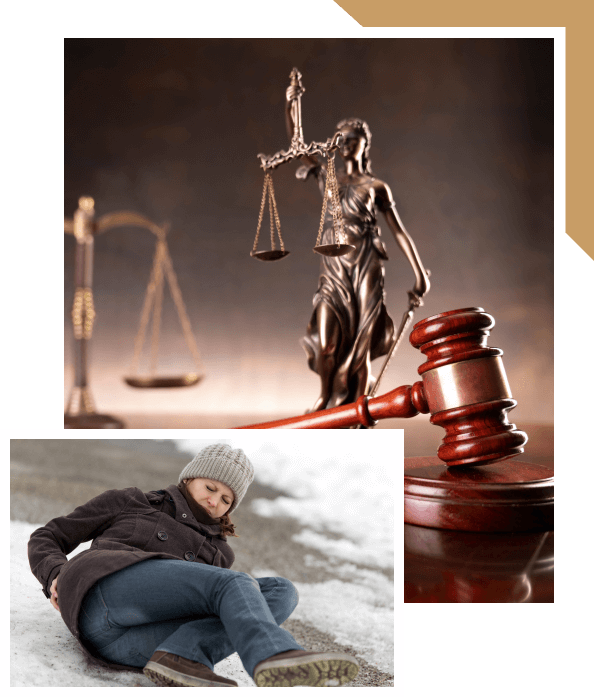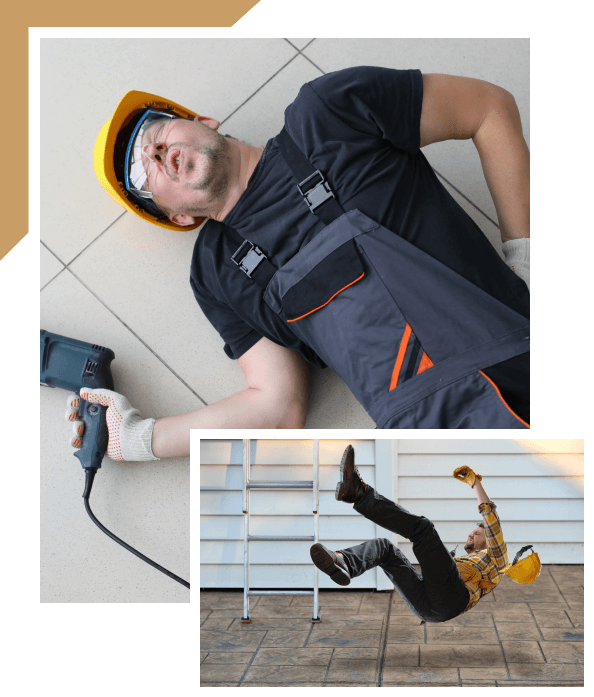
No Fees Paid, Unless We Win!
What Is The Legal Standard In Premises Liability?
How Does It Relate To Slip And Fall Or Trip And Fall Injury Cases In Ohio?
Many people believe that if you’re at a business and get hurt, the business is responsible. That’s actually not true. The Ohio Supreme Court has consistently said that the duty owed to customers or pedestrians “does not require landowners to insure the safety of invitees on their property.” Lang v. Holly Hill Motel, Inc., 122 Ohio St.3d 120. A business is responsible if you suffered a fall that was due to a defect that the owner created, knew about or had been there long enough that the owner should have known about. Therefore, at a minimum, you have to know what caused you to fall in order to hold the owner responsible. Talk to a professional while the incident is still fresh in your mind or early enough for us to preserve the scene by photographing it or talking to witnesses.
Since there are often subtle differences between the cases where there is and is not liability, it is always wise to consult a lawyer. For instance, in Ohio, ice and snow cases pose a special issue. The Courts will not hold a business responsible for a pedestrian who falls on a natural accumulation of ice and snow. But, if you fall because of an unnatural accumulation, that could be a basis for liability. If you get out of your car and step onto the sidewalk where there is water dripping and freezing from a faulty pipe, and you step onto that ice and fall, the property owner could be held responsible. The law states “natural accumulation.” A defective drainage system creating a patch of ice is not a natural accumulation. That could be negligence. It is important to photograph the premises and talk to a lawyer because it’s not always an obvious answer.
I have had many ice and snow cases.
And so, when I investigated those cases, I was able to discover that in fact, there weren’t natural accumulations of ice and snow. As a result, I was able to obtain successful results for my clients. However, I can’t do that if you fall this week and a year from now find out that the landowner won’t pay, and you now want to pursue a claim. Is the evidence gone? Can I still do an investigation? Are there photographs of that area on that day? Immediate response in those cases makes all the difference.
I had a case in which a client fell in the parking lot due to an accumulation of ice from a poor drain.
The business repaired the defect shortly after the accident. Luckily, my client’s family took some pictures that day of the area where the poor drainage was creating ice. With the pictures on hand, I could show how it was at the time of the fall since the defect was gone. In that case, the defect was the cause of the fall that created the ice.
In another case, there was a big hole at the edge of a carport in a rental unit. The hole accumulated water, which later froze. My client did not live there but had called the owner of the property that managed this large rental facility to make a claim because they fell on ice. The owner said that they couldn’t recover under that circumstance. The client called me, and soon enough, I went to look at the property. I realized that there was a big hole and they had failed to repair it. The hole itself was the problem. That’s what created the ice and snow.

There can be a defect, but still no liability if the business owner warns you of the defect.
For example, a woman who owns a sandwich shop has a step that’s dangerous because it is not a standard size. But, the business posts a sign that says, “Watch your step.” Even though the step itself is dangerous, the warning could protect the business from liability to the fall victim. Ohio law makes the specific facts very important.
If a person goes into a store and falls on a spill due to a product, the victim would have to show that the store owner knew or should have known that the spill or defect existed. Knowledge requires the store to warn people about it or make it safe prior to the customer falling on the spill. However, if someone spills a drink as I’m walking down the store aisle and I fall on that drink, there isn’t enough time for the store owner to become aware of that spill and make the area safe even though it’s a dangerous situation.
The question then is:
How do you prove how long the store or its employees knew or should have known?

That’s another factor that lawyers explore.
I had a situation where there was water in front of an ice machine in a store. The store told my client, their customer, that they didn’t know how the water got there, so they were not responsible. In that case, I did an inspection of the store and noticed that the ice machine was five or ten feet from all of the cash registers. There were employees stationed within view of that ice machine at all times. My argument was that they couldn’t say they didn’t know, and that perhaps it was another customer who had come along and created that situation. There were employees standing nearby and it was visible to all of them if the employees were exercising care.
Each situation is different. A lawyer is often equipped to find that out. Sometimes, it even requires an expert. I’ve had situations where a premise was constructed in such a way that the design was aesthetically pleasing, but it was not good for pedestrians. In those types of cases, I can get a professional to explain that although a design may be aesthetically pleasing, it creates a dangerous situation for a pedestrian so the business design is itself hazardous.
In fall cases, there is also a defense referred to the “open and obvious” doctrine. “Where a danger is open and obvious, a landowner owes no duty of care to individuals lawfully on the premises.” Armstrong v. Best Buy Co., Inc., 99 Ohio St3d 79. If a defect is open and obvious, the landowner might not be held liable. For example, if there is a pothole in the parking lot and you get out of the car and fall in the pothole, the landowner can use the defense of open and obvious if the pothole was obvious to the naked eye. They can say that they don’t have to warn you of the pothole because it was open and obvious. Therefore, they can say that they have no duty to warn and are not responsible for the claimant’s fault.
Whether or not something is open and obvious may be debatable.
For example, were there other conditions, including lighting, or other pedestrian traffic that obscured the defect?
Another example may be the circumstance where a defect seems obvious, but there are circumstances that draw the pedestrian’s attention away from the defect.
We have successfully recovered in the case of a retail store which had a merchandise display drawing customers’ attention to the merchandise and away from a defect which would otherwise be visible.
A lawyer that is experienced in personal injury law and slip and fall cases is equipped to evaluate all of those differences.
There are a lot of legal traps in slip and fall cases. As such, those are the cases that really require a consultation with a lawyer prior to talking to the landowner’s insurance company
No Fees Paid, Unless We Win!
For more information on Slip-And-Fall Cases In Ohio, a free no obligation consultation is your next best step.
Get the information and legal answers you are seeking by calling (330) 286-0474 today.
